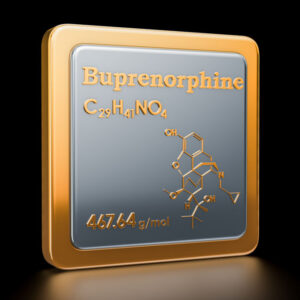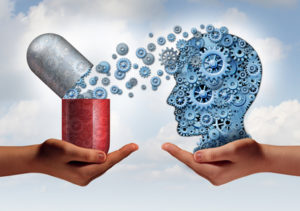Throwing Down the Gauntlet for ECT, Part 1
Effective on December 26, 2018, the FDA issued a final order that required a premarket approval application for most uses of electroconvulsive therapy (ECT) devices. It also reclassified using ECT devices to treat catatonia or a severe major depression episode or bipolar disorder from Class III (higher risk) to Class II (moderate risk) with special conditions. This meant ECT manufacturers would have to submit information to the FDA demonstrating their ECT device complied with special controls that diminish known risks and provided an assurance of safety. These special controls were requirements about the technical limitations of the ECT device, about the labeling of potential adverse effects, about necessary practitioner training and a few aspects of clinical practice with the device. Carlos Pena, director of the Division of Neurological and Physical Medicine Devices for the FDA, said: “We remain committed to ensuring patients have access to reasonably safe and effective medical devices using the most current and scientifically robust information available.”
The reclassified uses for ECT devices into Class II are limited to the treatment of catatonia or a severe major depressive episode associated with major depressive disorder or bipolar disorder in patients age 13 years and older who are treatment-resistant or who require a rapid response treatment due to the severity of their psychiatric or medical condition. The safe use of ECT for treatment of these conditions has been well studied and is better understood than other uses. Therefore, sufficient information exists to establish special controls that mitigate known risks and provide a reasonable assurance of safety and effectiveness for these two uses of ECT devices. Manufacturers of ECT devices for the indications above will now need to submit information to the agency to demonstrate their devices are in compliance with these special controls.
A Premarket Approval (PMA) application is the scientific and regulatory review process the FDA uses to evaluate the safety and effectiveness of Class III medical devices. Class III devices support or sustain life, are of significant importance in preventing the impairment of human health, or they “present a potential, unreasonable risk of illness or injury.” PMA is based on the FDA determining there is sufficient, valid scientific evidence in the PMA application to assure the device is safe and effective for its intended use(s). The FDA determined that general and special controls alone were not sufficient to assure the safety and effectiveness of Class III devices.
For that reason, they required a PMA application from manufacturers to obtain marketing approval for their devices. A PMA application is required for all uses of an ECT device not specified as Class II, including disorders like schizoaffective disorder and bipolar manic states. This is because the FDA said it does not have sufficient information to establish special controls to provide a reasonable assurance of the safety and effectiveness of ECT devices for these indications.
In Psychiatric Times, Doctor Charles Kellner, who is the Chief of ECT Therapy ay New York Community Hospital, said the FDA’s final order was very good news in that it allowed for the ongoing availability of ECT devices in the US, but had “slightly less good news” in that what he referred to as “on label” indications was shorter than it had been in the past. With regard to the implications of the FDA order, he said most importantly moving depression into Class II ensures the majority of ECT patients will not have any change in their care. The way the order is written closely mirrors existing clinical practice. He estimated that major depression and catatonia account for 60% to 70% of current American ECT practice.
He emphasized that the FDA order does not regulate medical, clinical practice, meaning “practitioners are free to continue to prescribe ECT for any patient, regardless of diagnosis, whom they feel would benefit from the treatment.” Choosing to leave schizophrenia, schizoaffective disorder and mania in Class III was perplexing and disappointing to him, as he said schizophrenia was the leading indication globally for ECT and “the clinical and research evidence base support ECT as safe and effective for this illness.” He believed ECT devices will continue to be a small, but important part of psychiatric tools. From his contacts with other ECT practitioners around the country, he believed ECT use was increasing.
Dr. Kellner has spent most of his professional career in the study of ECT, especially with geriatric patients and can be understood as having a more positive view on the practice and future of ECT. But is his assessment accurate? Is the use of ECT increasing? Is the FDA final report good news and slightly less good news with regard to ECT or is it an overly optimistic view of both ECT and the FDA final rule?
Psychologist Phillip Hickey pointed out some inconsistencies in previous statements made by Dr. Kellner with regard to ECT that suggests his apparent optimism was at least partly playing to his perceived audience, other psychiatrists and medical doctors. In an editorial which he co-authored for the Journal of ECT, he said: “Despite its widespread acceptance in the medical community, ECT remains surrounded by ‘controversy.’” Yet in an earlier article for New Scientist, Kellner was quoted as saying “ECT ‘remains in the shadows’”, and described it as the second most controversial medical procedure after abortion. In the US and UK, only a tiny fraction of people whose depression doesn’t respond to medication are offered ECT.
Philip Hickey asked if only a tiny fraction of eligible patients were referred, “doesn’t this suggest that they [psychiatrists and other medical specialists] are, as a group less supportive of electric shocks” then Kellner claimed? He then cited a supporter of electric shock, George Kirov, a professor at Cardiff University who supervises ECT treatment in the city of Cardiff, Wales. Kirov acknowledged there are mixed feelings about ECT, even among psychiatrists. “If I speak to medical professionals outside of psychiatry, there is almost disbelief that we are using such an archaic practice.”
Joanna Moncrieff is a psychiatrist with reservations about the use of ECT in psychiatry. In her 2008 book, The Myth of the Chemical Cure, she acknowledged that ECT is still an accepted part of psychiatric clinical practice, but she thought its use was waning. She said it was the most controversial of current psychiatric treatments. The efficacy of ECT for depression in the short-term was still regarded as well-established, but she said it had no long-term effect. “In other words, a few weeks after the ECT has taken place, people are no better than they would have been if they had never had it.” She added:
The state produced by ECT offers several explanations for the apparent therapeutic effects of ECT. Firstly, the acute cognitive effects may temporarily override underlying emotional states and reduce people’s ability to express their emotions. The fact that the beneficial effects of ECT do not persist beyond the period of treatment would support this idea (Ross 2006).
Ross said the burden of proof is on ECT advocates to show that ECT can be prescribed ethically and rationally. He suggested a research study be conducted involving a randomized, prospective, double-blind, placebo-controlled design be done in which the placebo was sham ECT. But he wondered whether a true double blind was even possible in sham ECT research. “In the absence of such a study, whatever its outcome, the sham ECT literature supports the conclusions that: real ECT is no more effective than placebo, except during the period of time ECT is being administered; even that difference is modest.” He noted how the effectiveness of ECT was over-endorsed repeatedly in the psychiatric literature.
Moncrieff said other possible explanations for the apparent therapeutic benefit of ECT include the sedative and calming effects of ECT may produce improvement, particularly in people with agitated depression. The organic behavioral cycle produced by ECT, with its euphoria and disinhibition, can be mistaken as improvement. This is often misdiagnosed as mania, even in people with no history of manic depression. Lastly, ECT may work psychologically. In other words, patients may be able to break the double-blind methodology of the ECT control trials since the sham procedure cannot replicate the acute cognitive effects of ECT. Particularly if they have previously had ECT and believed ECT worked for them, they could be disappointed if they determined they had received the sham procedure. Conversely, they may do better if they received the real ECT treatment and were able to perceive it.
These explanations offered a more compelling explanation of the effects of ECT than the idea it was a specific treatment for major depression, according to Moncrieff. In addition, there is no currently accepted coherent theory of the efficacy of ECT or what it does to the brain that might help in depression:
(The jury is still out on ECT. Its use has survived much longer, despite widespread opposition from some psychiatric survivors and the fact that it is widely acknowledged that its effects are not persistent. Its effects can be explained by the acute cognitive impairment it causes, sometime amounting to a brain injury-like state that can be mistaken for recovery from depression.
Dr. Kellner may have an overly optimistic view for the future of ECT in the wake of the FDA final rule. I’d like to have some clear evidence one way or the other about whether ECT use is actually increasing. And I am not sure if the FDA final report is the “good news” he thinks it is. It appears to me the FDA has thrown down a gauntlet for medical device companies. They are to demonstrate their ECT devices are in compliance with special controls that diminish the known risks of ECT for Class II conditions.
And the companies are required to meet more stringent expectations, with sufficient and valid scientific evidence, that an ECT device does not “present a potential, unreasonable risk of illness or injury” if they want to claim their device as a treatment for Class III conditions. I hope the FDA remains committed to the stated standard of science described in their final rule on ECT. It will be interesting to see what the agency does with a recent publication in the Journal of Ethical and Human Psychology, “Electroconvulsive Therapy for Depression,” that raises the possibility that past support for ECT may be based on poor quality research. We will look at the claims of that study in Part 2 of this article.





